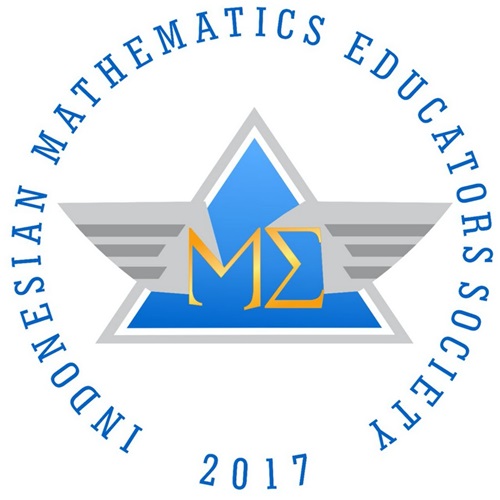Flipped Classroom Learning Model to Improve Junior High School Students' Mathematics Learning Outcomes
DOI:
https://doi.org/10.22437/edumatica.v12i03.20424Keywords:
flipped classroom, learning model, learning outcomes, mathematicsAbstract
Cognitive ability is one of the mathematics learning outcomes. Low cognitive ability affects student learning outcomes, and teachers must overcome these problems. This study aimed to see the variation in the improvement of mathematics learning outcomes between students who used the flipped classroom model and those who did not. This study applied a quantitative approach with a quasi-experimental design and a non-equivalent (pre-test and post-test) control group design. The population is Year 8 students at one of the public junior high schools in Aceh, Indonesia. By simple random sampling, the samples selected were one experimental class and one control class. The research instrument involves the pythagorean theorem test, while the instruments include lesson plans, student worksheets, and learning videos. The data were collected through pre-test and post-test. The data analysis was carried out by t-test to observe the difference in improving students' mathematics learning outcomes in the two classes. The results show that 1) the increase in students' mathematics learning outcomes was better when using the flipped classroom model than those without the model; 2) the increase in learning outcomes of the experimental class was in the high category while it was in the medium category for the control class.
Downloads
References
Almodaires, A. A., Alayyar, G. M., Almsaud, T. O., & Almutairi, F. M. (2019). The Effectiveness of Flipped Learning: A Quasi-Experimental Study of the Perceptions of Kuwaiti Pre-Service Teachers. International Education Studies, 12(1), 10-23. https://eric.ed.gov/?id=EJ1201519
Bergmann, J., & Sams, A. (2012). Flip Your Classroom: Reach Every Student in Every Class Every Day. International Society for Technology in Education.
Bhagat, K. K., Chang, C.-N., & Chang, C.-Y. (2016). The Impact of the Flipped Classroom on Mathematics Concept Learning in High School. Journal of Educational Technology & Society, 19(3), 134-142. https://www.jstor.org/stable/jeductechsoci.19.3.134
Cahyadi, E., Dwikurnaningsih, Y., & Hidayati, N. (2019). Peningkatan Hasil Belajar Tematik Terpadu Melalui Model Project Based Learning pada Siswa Sekolah Dasar. Jurnal Riset Teknologi Dan Inovasi Pendidikan (Jartika), 2(1), Art. 1. http://journal.rekarta.co.id/index.php/jartika/article/view/281
Creswell, J. W. (2016). Research Design Pendekatan Metode Kualitatif, Kuantitatif dan Campuran (4 ed.). Pustaka Pelajar.
Damayanti, H. N., & Sutama, S. (2016). Efektivitas Flipped Classroom Terhadap Sikap dan Keterampilan Belajar Matematika di SMK. Manajemen Pendidikan, 11(1), Art. 1. https://doi.org/10.23917/jmp.v11i1.1799
Farida, I., Herkulana, & Salim, I. (2015). Pengaruh Motivasi Belajar dan Pemanfaatan Sumber Belajar Terhadap Hasil Belajar Siswa SMP Negeri 11 Pontianak. Jurnal Pendidikan Dan Pembelajaran Khatulistiwa, 4(5), Art. 5. https://jurnal.untan.ac.id/index.php/jpdpb/article/view/10127
Fauzi, A. (2020). Pengaruh Model Pembelajaran Team Assisted Individually (TAI) Terhadap Hasil Belajar Siswa pada Materi Teorema Pythagoras di Kelas VIII MTs Al-Washliyah Sihepeng. [Skripsi, IAIN Padangsidimpuan]. http://etd.iain-padangsidimpuan.ac.id/2938/
Hake, R. (2002). Relationship of Individual Student Normalized Learning Gains in Mechanics with Gender, High-School Physics, and Pretest Scores on Mathematics and Spatial Visualization. Physics education research conference, 8(1), 1-14.
Hanif, H. N. (2016). Perbandingan antara Model Pembelajaran Flipped Classroom Berbantuan Edmodo dengan Pembelajaran Konvensional Terhadap Hasil Belajar Sistem Operasi (Eksperimen Kelas X SMK 1 Banyudono) [UNS (Sebelas Maret University)]. https://digilib.uns.ac.id/dokumen/54537/Perbandingan-antara-model-pembelajaran-flipped-classroom-berbantuan-edmodo-dengan-pembelajaran-konvensional-terhadap-hasil-belajar-sistem-operasi-eksperimen-kelas-x-smk-1-Banyudono
Hudojo, H. (2005). Pengembangan Kurikulum dan Pembelajaran Matematika. IKIP Malang.
Igirisa, N. (2017). Pengaruh Model Flipped Learning Terhadap Hasil Belajar Matematika Ditinjau dari Gaya Belajar Siswa. Jurnal Pascasarjana, 2(1), Art. 1.
Johnson, G. B. (2013). Student Perceptions of the Flipped Classroom [University of British Columbia]. https://doi.org/10.14288/1.0073641
Lo, C. K., & Hew, K. F. (2017). Using “First Principles of Instruction” to Design Secondary School Mathematics Flipped Classroom: The Findings of Two Exploratory Studies. Journal of Educational Technology & Society, 20(1), 222-236. https://www.jstor.org/stable/jeductechsoci.20.1.222
Lopes, A. P., & Soares, F. (2018). Perception and Performance in a Flipped Financial Mathematics Classroom. The International Journal of Management Education, 16(1), 105-113. https://doi.org/10.1016/j.ijme.2018.01.001
Mashuri, S. (2019). Media Pembelajaran Matematika. Deepublish.
Nasution, M. K. (2018). Penggunaan Metode Pembelajaran dalam Peningkatan Hasil Belajar Siswa. Studia Didaktika, 11(01), Art. 01.
Pratiwi, I. R. (2022). Efektifitas Blended Learning melalui LMS Moodle untuk Meningkatkan Kemandirian Belajar Mahasiswa pada Mata Kuliah Matematika di Politeknik [The Effectiveness of Blended Learning using The Moodle LMS to Improve Polytechnic Students' Self-Regulated Learning in Mathematics Courses]. JOHME: Journal of Holistic Mathematics Education, 6(1), Art. 1. https://doi.org/10.19166/johme.v6i1.5217
Rahmadi, I. F., Khaerudin, K., & Kustandi, C. (2018). Kebutuhan Sumber Belajar Mahasiswa yang Mendukung Pembelajaran Berbasis Teknologi Informasi dan Komunikasi di Perguruan Tinggi. JTP - Jurnal Teknologi Pendidikan, 20(2), Art. 2. https://doi.org/10.21009/jtp.v20i2.8620
Schleicher, A. (2018). PISA 2018: Insights and Interpretations. OECD Publishing.
Sojanah, J., & Kencana, N. P. (2021). Motivasi dan Kemandirian Belajar sebagai Faktor Determinan Hasil Belajar Siswa. Jurnal Pendidikan Manajemen Perkantoran (JPManper), 6(2), Art. 2. https://doi.org/10.17509/jpm.v6i2.40851
Sun, Z., Xie, K., & Anderman, L. H. (2018). The Role of Self-Regulated Learning in Students' Success in Flipped Undergraduate Math Courses. The Internet and Higher Education, 36, 41-53. https://doi.org/10.1016/j.iheduc.2017.09.003
van Alten, D., Phielix, C., Janssen, J., & Kester, L. (2019). Effects of Flipping the Classroom on Learning Outcomes and Satisfaction: A Meta-Analysis. Educational Research Review, 28, 1-18. https://doi.org/10.1016/j.edurev.2019.05.003
Walidah, Z., Wijayanti, R., & Affaf, M. (2020). Pengaruh Model Pembelajaran Flipped Classroom (FC) terhadap Hasil Belajar. Edumatica : Jurnal Pendidikan Matematika, 10(2), Art. 2. https://doi.org/10.22437/edumatica.v10i2.10546
Wei, X., Cheng, I.-L., Chen, N.-S., Yang, X., Liu, Y., Dong, Y., Zhai, X., & Kinshuk. (2020). Effect of the Flipped Classroom on the Mathematics Performance of Middle School Students. Educational Technology Research and Development, 68(3), 1461-1484. https://doi.org/10.1007/s11423-020-09752-x
Yanuarto, W. N. (2018). The Flipped Classroom Learning Model untuk Menumbuhkan Kemandirian Belajar Matematika dan Memaksimalkan Peran Teknologi pada Pendidikan. De Fermat : Jurnal Pendidikan Matematika, 1(1), Art. 1. https://doi.org/10.36277/defermat.v1i1.10
Al Azhri. (2021, January 10). Teorema Pythagoras [Part 3] - Menentukan Jenis Segitiga dan Tripel Pythagoras. Retrieved May 1, 2022, from https://www.youtube.com/watch?v=9GRBn6GshsE
Downloads
Published
How to Cite
Issue
Section
License
Copyright (c) 2022 Puja Maiprillia, Mailizar Mailizar, Elizar Elizar

This work is licensed under a Creative Commons Attribution-NonCommercial-ShareAlike 4.0 International License.







